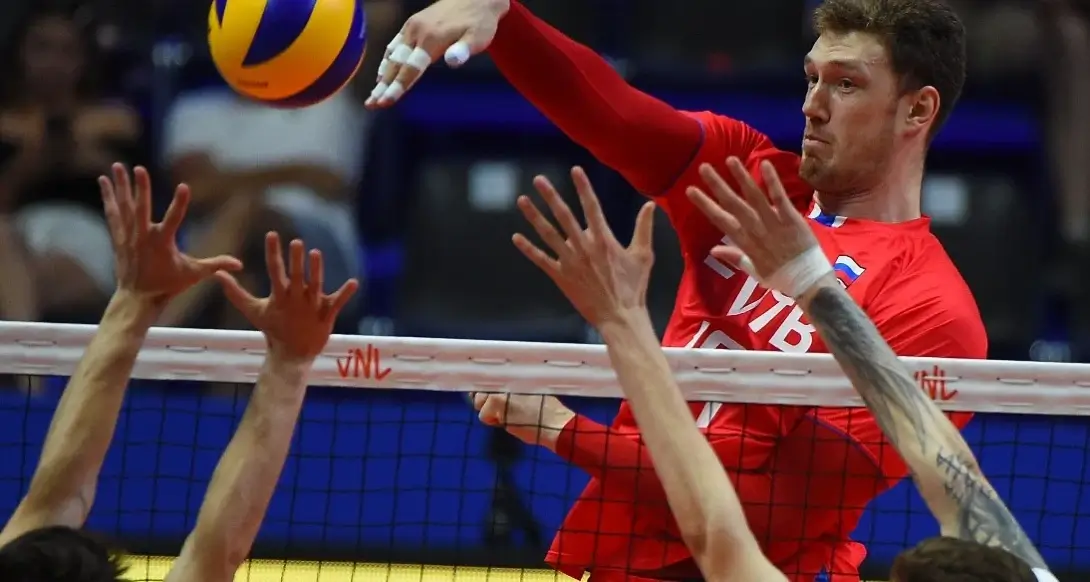Last Updated: February 29, 2024
Volleyball, a game of intricate strategies and dynamic roles, shines a spotlight on various positions, each pivotal in its own right. Among these, the opposite hitter stands out as a cornerstone of both defense and attack. This position, demanding a fusion of skill, agility, and tactical acumen, is vital for any successful volleyball team.
Grasping the Position of the Opposite Hitter

The opposite hitter is an essential component in the complex game of volleyball. You’ll notice the opposite hitter typically positioned on the right-hand side of the playing court and personifies a strategic wildcard.
The development of the opposite hitter’s position shows the progress of volleyball from its basic form in the early twentieth century to the hyper-active, tactical sport we see in modern times. At first, the position was mostly about raw power and less about techniques. But volleyball evolved and with time the game began to absorb advanced tactics and to tackle these demands, the role of the opposite hitter or spiker developed to what it is today.
The opposite hitter must be an expert in different aspects in modern volleyball. They should also adjust their style of playing as per the needs of the team and game flow. The skills to hit precisely, dexterity and alertness are some characteristics which the opposite hitter position demands.
Offensive Contributions
Opposite hitters are the main spikers of the team when it’s about offense. Their forte is hitting powerful spikes that can confuse even the most strategic defense. But placing the ball strategically and expertise are also necessary besides force.
These players are capable of understanding and taking advantage of rivals’ formation. Opposite hitters display a keen sense of understanding the game’s dynamics and flow whether it’s smartly locating a spot for hitting or getting past a block.
Opposite hitters’ skills to adapt their attacking style depending on the setter’s sets is a clear proof of their versatility in offense. They’re expert at adjusting their tactics to double the chances of scoring whether it’s about hitting a high ball, positioning for a fast set or a sudden shift in the momentum.
The versatility and skills of such players make it challenging for rivals to defend and give the opposite hitters’ team the upper hand.
Defensive Contributions
When it comes to defense, opposite hitters play a significant role as they hold the line against the opponent’s attacks. Their blocking skills are especially important in countering the opponent hitters’ assaults. However, effective blocking for hitters goes beyond attributes like height and reach; it primarily relies on timing anticipation and understanding the opponent’s strategy. A timed block not only prevents the opposing team from scoring, but also creates an opportunity for a counterattack.
In the back row their responsibilities expand further. Here they contribute to the team’s efforts by handling serve receives and delivering passes. They can maintain control over the game’s pace and smoothly transition from defense to offense. Their ability to perform under pressure, especially when facing serves, showcases their skill and composure.
Versatility and Adaptability
The essence of a hitter lies in their versatility and adaptability. They are essential in team formations, especially in the 5-1 and 6-2 rotations, which are important in modern volleyball strategies.
In a 5-1 rotation, where there is always one setter on the court, the opposite hitter often becomes the attacker when the setter is in the front row. This means they need to be prepared to showcase their skills at any given moment.
On the other hand in a 6-2 rotation, with two setters the opposite hitter often takes on a setting role when positioned in the back row. This demonstrates their ability to adapt and switch between attacking and playmaking responsibilities.
The hitter’s versatility to seamlessly transition between defense is what makes them so valuable. They are expected to go from delivering spikes to setting up their teammates or executing blocks. Their gameplay reflects a range of skills as they adjust based on their team’s needs and how the match progresses. In this sense their position can be compared to that of a chameleon adapting to the changing dynamics of each game.
Technical Skills Required
To excel as an opposite hitter one needs to have a range of technical abilities.
- First and foremost they must possess the power and accuracy to deliver hits. It’s not only about force but also about precision and the ability to analyze the opponents defense in order to identify the best spots to attack.
- Another critical skill is blocking. Opposite hitters often face off against the attackers of the opposing team and their ability to anticipate and counter these attacks can greatly disrupt their opponents’ offensive strategies.
- Competent setting skills are also vital in systems where the opposite hitter may be required to act as a setter. This necessitates not only ball handling skills but also a deep understanding of their teammates strengths and the team’s offensive strategies.
- Lastly, reliable passing is essential in situations where they receive serves. Opposite hitters must be skilled at controlling the ball. Ensuring it is well placed for the setter thereby maintaining their team’s momentum.
Recommended Read: Top Mistakes to Avoid as an Opposite Hitter
Conclusion
The role of a hitter is multifaceted and indispensable. In a game where every point is fiercely contested, their value in both defensive and offensive strategies cannot be overstated. They bring not only a boost to the team’s performance but also an element of thrill and unpredictability to volleyball.
